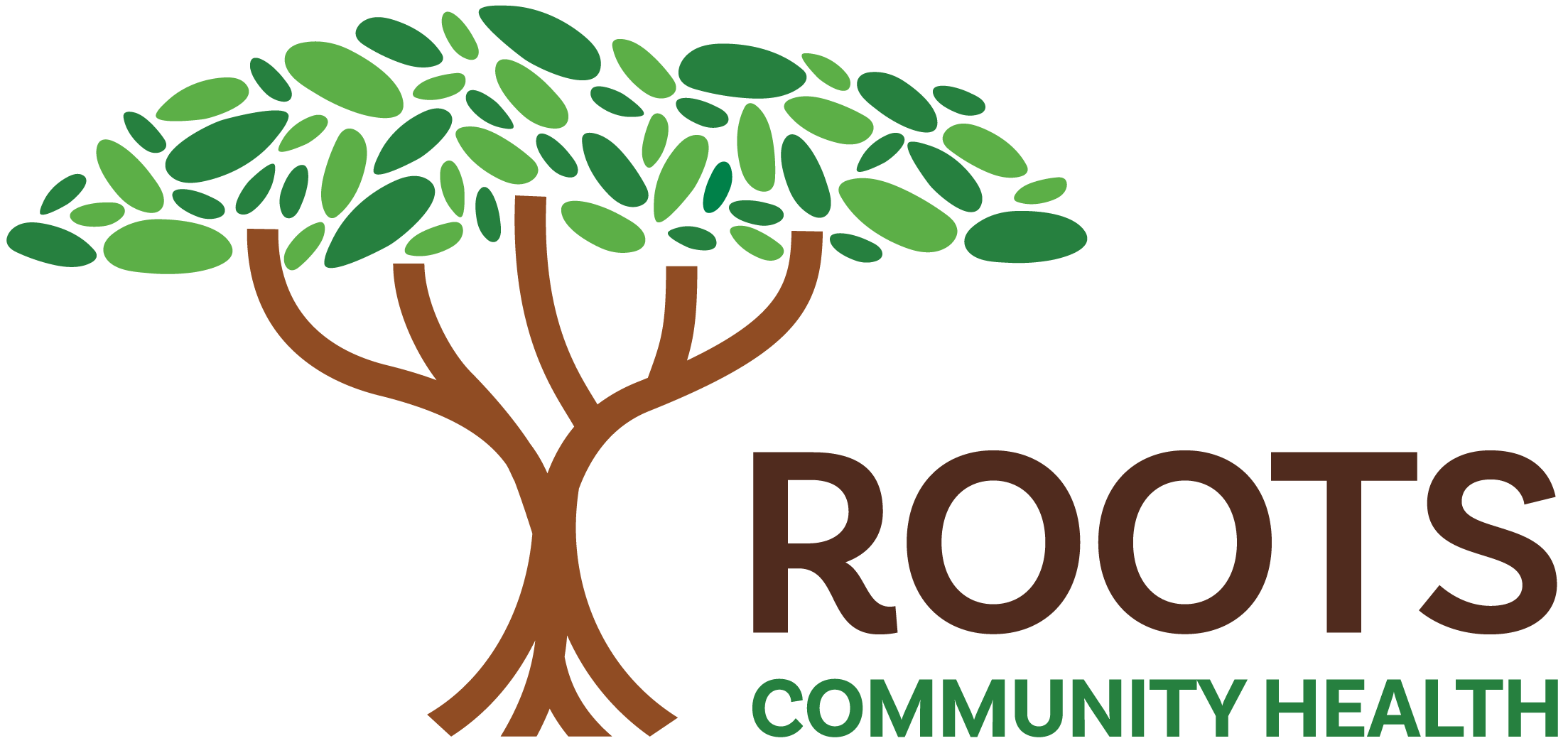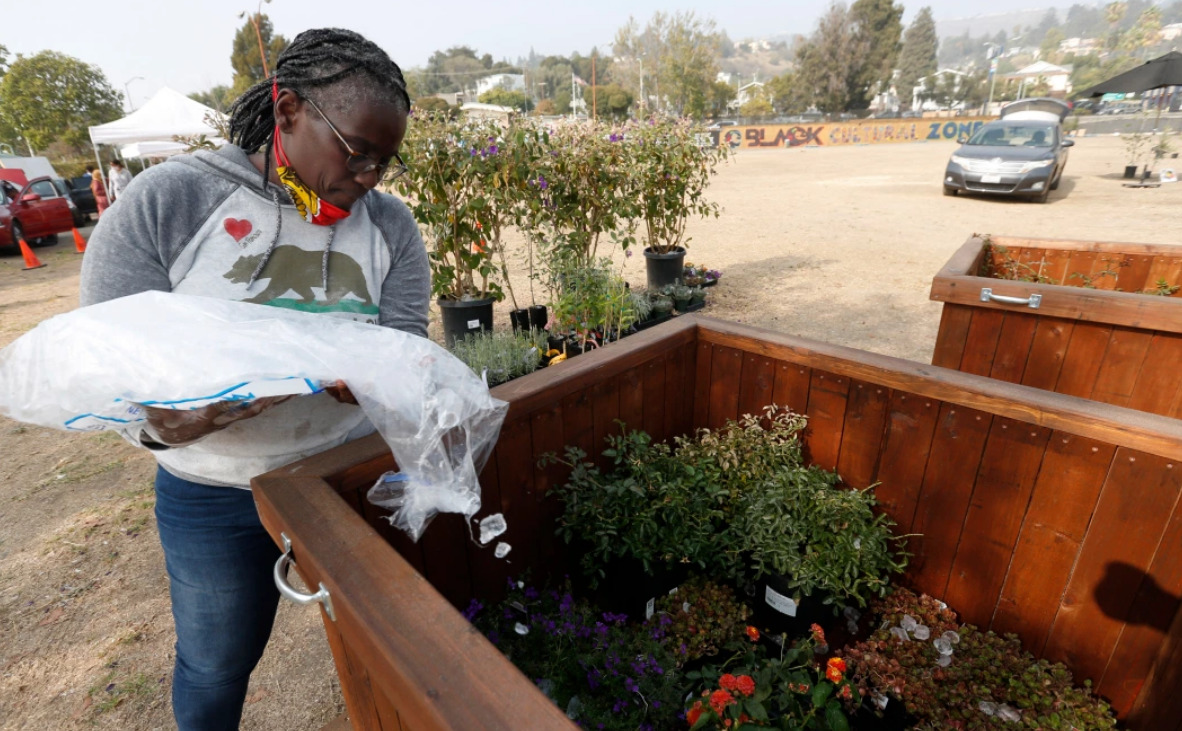New Black Cultural Zone helps East Oakland neighborhood thrive
Meal distribution and Sunday farmer’s market help revitalize former vacant lot
On a former weed-choked, garbage-filled lot, community activists are sowing seeds for the future of Black culture in East Oakland.
The East Oakland Black Cultural Zone Collaborative — a partnership of more than 20 local nonprofits — spearheaded the effort to establish the Black Cultural Zone in a triangle-shaped lot along 73rd Avenue and Foothill Boulevard. The site, also known as Liberation Park, borders the Eastmont Town and Transit centers.
East Oakland native and Castlemont High School graduate Carol Johnson, executive director of the collaborative, has been working with the city to bring the project to fruition.
“I’m from here, born and raised, so I know what’s possible,” said Johnson, also known as C.J. “There’s enough ancestors and wisdom and knowledge to reclaim the space, but also elevate it so we won’t lose it again.”

CLICK HERE if you’re having a problem viewing the photos on a mobile device.
The 54,000-square-foot, city-owned land was a former automotive and tire center but has been vacant since 2007, when the city acquired it. The crime-plagued area has long been known for shootings instead of shopping.
Johnson has not lost any immediate family members to violence but has known classmates who’ve been killed. She’s also concerned about a recent spike in suicide among Black youth, and they’ve designated the first Sunday of each month as Healing Day, which will include a community dinner, rituals to acknowledge losses and grief and health support services.
“A lot of us are walking around with pain that’s under the surface and not addressed,” Johnson said.
The collaborative partnered with Oakland District 6 City Councilmember Loren Taylor, who helped launch the Zone’s Akoma Outdoor Market on Sept. 6.
“Especially now with the Black Lives Matter movement, the need to empower and address the systemic issues that we face, including historical injustices and disparities, is even more urgent,” Taylor said.
The collaborative took control of the site in March, just as the COVID-19 pandemic hit and many businesses were shuttered. A variety of services began in June with the distribution of free meals from the World Central Kitchen and COVID-19 testing through Umoja in Health. First Fridays — similar to the Uptown Oakland event — began in July with live local entertainment and food trucks.
A commercial real estate developer, broker and tenured college professor, Johnson wants to change the negative impression of East Oakland and make sure there’s a balance between a thriving Black community and gentrification.
“Our goal is that every day of the week, there will be something happening that highlights Black arts, culture, people and business,” Johnson said.
During the dire economic times of the pandemic, Jose Andres’ World Central Kitchen helped over 100 Oakland restaurants bring back employees to make meals for struggling residents. At the Zone, volunteers and paid student interns serve hundreds of dinners on Mondays, Wednesdays and Fridays from 4 to 6 p.m.
Friends and retirees Carolyn White and Detrie Hooker volunteered to help distribute meals on a recent Monday afternoon as cars drove through and people walked up.
“It’s rewarding to be able to help and you have a sense of satisfaction,” White said.
With Black culture in mind, outdoor movies will be shown on the last Friday of every month and an outdoor play is scheduled from Oct. 22-25.
“It changes the conversation about who we are, and gives hope to people. This is our home,” Johnson said. “So many people want this place to work, that it’s being treated as a sacred Black space.”
The collaborative partners with many community organizations, including the Eastside Arts Alliance, Allen Temple Health and Social Services, the East Oakland Collective, East Oakland Youth Development Center, Oakland Public Conservatory of Music, and the ROOTS Community Health Center.
“We’re going to put our best foot forward and with community support make our vision become a reality,” Johnson said.
The collaborative got input from Castlemont High School students, who surveyed residents to develop a plan for the space. They created 3-D models, websites and worked with Taylor and Tommy Wong of Civic Design Studio to pitch their concept to the city.
“I’m so proud of them. I knew they had these brilliant insights and wanted to be able to use their design skills to improve this space,” said Lillian Jacobson, a Sustainable Urban Design Academy teacher at Castlemont High.
Colorful murals and signs with positive messages adorn the fence surrounding the lot, and pots brimming with plants, herbs and vegetables are the first signs of new life reinvigorating the barren, dirt parcel. A small performance stage with a brightly colored backdrop and artwork is set in the southeast corner.
City of Oakland senior policy advisor and East Oakland resident Pamela Ferran, who works with Taylor, said she would pass by the lot often and see its potential. She loves the fact that she can now walk from her house and buy locally-produced coffee and other goods.
“This is like a dream come true for me,” Ferran said.
Launching the venture amid a pandemic is challenging. Market vendors are required to have soap, water, sanitizer and masks. There’s a health inspector onsite, and everyone who enters has their temperature checked. Mask wearing and social distancing are mandatory. Vendors don’t pay a fee for their spaces, but donations are welcome.
Zahra Bruner attended the market with her daughter, Kayla Simmons, 12, as she pushed her mom, Hazel Bruner, along in a wheelchair on a recent Sunday.
“It’s really nice. We’re glad we have something like this in the community,” Bruner said. “It brings out more of the communal energy and vibe of the neighborhood.”
Chanawana Shayaha — dressed in a colorful African garment and accompanied by her daughter Nazareth, 3 — sold fabrics and jewelry from Authentic African under a canopy, while Christine Bradley, a Shay Body skincare vendor, also worked her nearby booth.
“The space is amazing, it’s a prime place to get foot traffic,” Bradley said. “I’m here for everything she’s (Johnson) trying to do, and I pray that everything works perfectly and they expand more territory.”
The once-thriving Eastmont Town Center next door is now a social services hub for the community but still offers a few retail amenities. Across from the Zone, several commercial lots destroyed by a 4-alarm fire in 2016 remain vacant, and small minority-owned businesses are struggling due to the pandemic.
Taylor believes that activating vacant blighted spaces and turning them around is key to building a safe community.
“We care about our Black community, and we’re intentionally focusing and investing in them,” Taylor said.
Longtime Oakland District 7 City Councilmember Larry Reid praises the new Zone, lamenting the violence that has plagued both his and Taylor’s districts.
“I support the work that C.J. does and truly appreciate her,” Reid said. “The city is committed to working with C.J. It’s going to take a while to materialize, it’s not going to happen overnight.”
Johnson and her cohorts have big plans for the future. They’d like to develop a mixed-use commercial space, similar to the Ferry Building in San Francisco, with two floors of affordable and mixed housing, and a rooftop garden above. Ideally, they envision permanent site control with a long-term lease from the city.
“We want to keep a Black presence in Oakland, and also support our Black, Brown and White community and have a vibrant culturally-diverse place. That’s who we are in Oakland,” Johnson said.
[line]
To donate to the Black Cultural Zone, click here.

